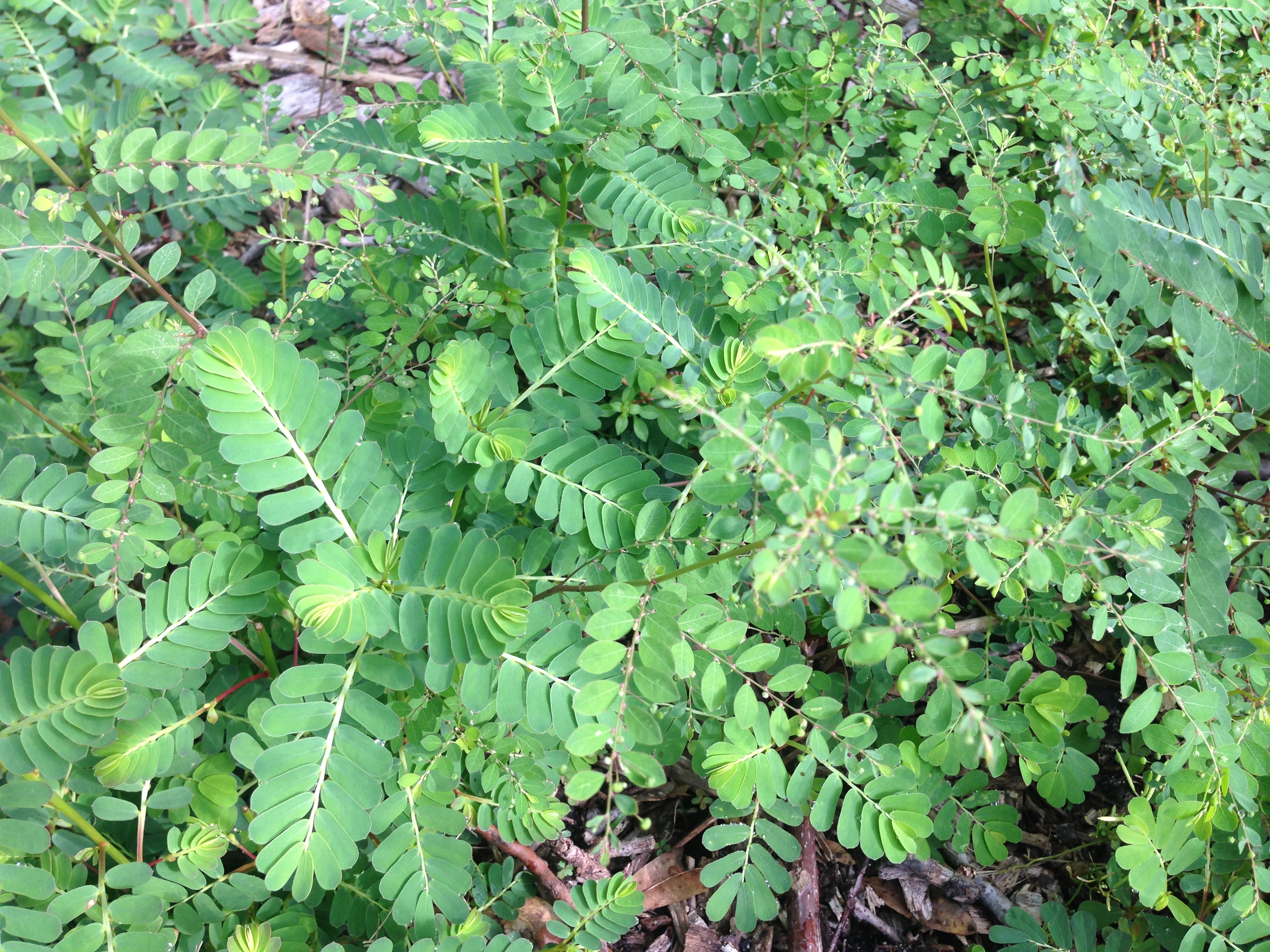
by Les Harrison | Aug 11, 2015
Weeds are growing everywhere, especially in manicured lawns and landscapes despite the best efforts of owners who have spared no expense to remove the offending flora. Herbicides to control the weeds seem to be less effective as August progresses.
The reality, at least about the herbicides, is different from perceived appearances. Herbicides can be a wonderful tool for the homeowner, if applied properly.
[important]The first point to remember about herbicides is to always, Always, ALWAYS apply them as instructed by the label directions. The oft quoted mantra of “the label is the law” is accurate.[/important]
Herbicides and their labeling are periodically reviewed and assessed to confirm effectiveness against target weeds without damaging the environment. Not following the label directions can have many negative implications for both the environment and the applicator.
Herbicides are either selective or non-selective when killing plants. Non-selective herbicides kill or damage every plant, but selective herbicides target a narrower range of plants.
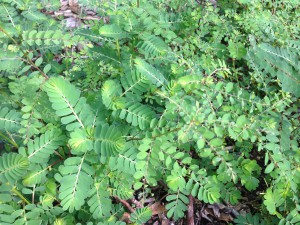
Chamberbitter, a common annual weed. Photo credit: Mary Derrick, UF/IFAS Extension.
Never apply herbicides when there is a breeze or wind. Herbicide drift can injure or destroy plants that are not the intended target.
High temperatures can contribute to the drift problem by volatizing some of the herbicide spray. Even the lightest air movement will cause drift off the target weeds when this condition exists. Herbicide drift can also be deposited in ponds and streams, harming the aquatic creatures that live there. Some herbicides are toxic to fish, insects and other animals that can be killed by tiny amounts of the active chemical. Additionally, the off target herbicides can kill aquatic plants. When the dead plants decay, they deplete the water of oxygen, again threatening or ending the life of the water’s residents.
Rain or dew resulting from high humidity can negate a herbicide’s application. If a leaf is wet, most or all the herbicide will run off on to the soil where it can leach into the water table.
Unless stated on the label, herbicides work only when the plant is actively growing. A hot, dry week or two can put a plant in drought mode, suspending growth and the herbicide’s effectiveness.
Many weeds have already produced seeds for next spring. Herbicides applied now will not affect the germination of that seed months from now.
The most effective strategy is to mow weeds before they set seed or to collect and destroy those which have already produced seed. Even with 100 percent success at eliminating this year’s weed seed crop, there will be weeds next year.
Some weed seed remain in the soil, sometimes for decades, only to germinate when conditions are perfect for their sprouting. Sickle pod and crotalaria are local examples of long term seed vigor.
Other seed can blow in or be dropped by wild or domestic animals passing through the property. A pre-emergent herbicide which stops germination can help control these latent invaders.
For more information:
Weed Management Guide for Florida Lawns
Gardening Solutions: Weeds
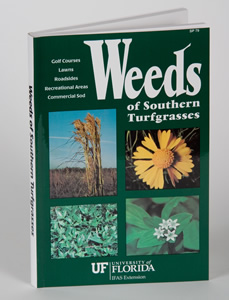
by Taylor Vandiver | Aug 3, 2015
As our world and our lives become more centered on technology it seems that all the information we need is just a touch screen away. After all, you are most likely reading this article from a laptop, smart phone, or tablet. While convenient and portable, there are some places you might not wish to take your electronics and one of those places is in the garden. You may say, “Well Taylor, that’s what they make waterproof, shatterproof, dirt proof, etc. cases for!” and I would say that you’re right. However, technology has many limiting factors such as battery life and screen glare. Now believe me, I am by no means disparaging technology! I come from a generation that considers Wi-Fi as necessary as water and an outlet comparable to oxygen. But there is something to be said for having a book in hand when out in the garden. For one thing your neighbors won’t worry about you as they see you march around the garden with your phone in the air doing the “No Signal Dance”. Also, a book is great to have in order for you to jot down any notes or reflections. I would like to list for you a few books that I often reference when I receive calls from homeowners. These books will cover various topics and all of them can be found on the UF/IFAS Bookstore website, the links for each can be found below. If you have any questions contact your local Extension Office and, as always, feel free to contact me and I can give you a rundown on my collection of favorite reference books!
- New to the UF/IFAS bookstore: “Trees: North & Central Florida” a field guide to 140 common tree species. This sturdy, pocket-sized field guide–the only one of its kind for north and central Florida–is designed for landscape professionals, arborists, naturalists, gardeners, and anyone seeking to know the trees around them. Full color photographs of leaves, bark, flowers and full trees, together with clear descriptions and other information make identifying trees easier than ever. This book also features a handy diagnostic key, an introduction to plant parts, a glossary and a ruler to guide you, whether you’re a trained botanist or a complete beginner.
- “Poisonous Plants of the Southern United States” John W. Everest, Thomas A. Powe, Jr., and John D. Freeman (of Auburn University). Identification of common poisonous plants found along fence lines and in pastures in the Southern United States.
- “Weeds of Southern Turfgrasses” This practical weed identification guide contains 427 color photographs of 193 weed species, their geographical range, and life cycle descriptions. Includes a glossary of taxonomic terms and index of common and scientific names.

- “Disorders and Diseases of Ornamental Palms” Recently revised and updated, this ID deck is a diagnostic tool for landscape professionals and backyard hobbyists. The color photographs and explanatory text helps users identify and distinguish between the nutritional deficiencies, physiological disorders and common diseases of ornamental palms. All palms in the U.S. suffer from disorders and diseases, and identifying the differences can be tricky. These cards feature photographs and descriptions and are cross-referenced for easy comparison between different symptoms and the potential problems causing them. Includes a table of contents and 55 laminated, ring-bound cards.
- “Florida Lawn Handbook: Best Management Practices for Your Home Lawn in Florida” Written in practical language by turfgrass experts, this highly-anticipated new edition offers the most current lawn management information. Color plates identify various grass types, weeds, diseases, and insects—including those that are good for your lawn! Chapters cover selection, establishment, and maintenance for each type of lawn; soil analysis and fertilization; yearly calendars for lawn care and culture; mowing, watering, and calibrating sprinkler systems and fertilizer spreaders; overseeding for winter color; preparing a lawn for drought and low temperatures; safe pesticide application and use; the latest integrated pest management strategies; organic lawn care; and complete, illustrated diagnostic information for weeds, diseases, insect problems, nematodes, and other pests.
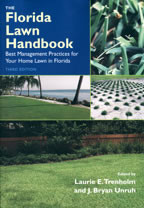
- “Sustainable Gardening for Florida” Gardeners today face a unique challenge: how do you create a beautiful, thriving landscape without over-use of fertilizers, pesticides, and water? Sustainable Gardening for Florida might be the first place to look for answers. This book provides interesting, money-saving ideas to reduce your ecological footprint. It includes chapters on composting and mulching, integrated pest management, water-wise irrigation and rainwater harvesting, preparing your garden for disasters, and all aspects of managing meadows, lawns, trees and shrubs, edible gardens, rain gardens and waterfront gardening.
- “Vegetable Gardening in Florida” From James Stephens, the founder of the Florida Master Gardener Program, this is the one resource you need to successfully grow vegetables in Florida. Whether you’re growing beans, tomatoes, herbs, or any other Florida crop, this guide will take you from site selection and insect management through the harvest and storage of your produce. Useful planting guides, gardening measurement conversions, and organic gardening information are accented with full-color throughout.

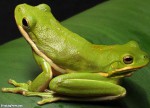
by Sheila Dunning | Jul 7, 2015

There are more than 100 species of plants and animals living in Florida that are in danger of extinction. These trees, flowers, reptiles, amphibians, birds, fish, mammals and invertebrates are listed as either threatened, endangered or species of special concern. As stewards of the land we must question, “What could the loss of a torreya tree, a lupine, a salamander, a butterfly, a woodstork, a right whale, a manatee, a sea turtle or a black bear do to our environment and our quality of life?”
Biological diversity is the variety and variability of species present in an ecosystem including the complex interactions of the many species. Regardless of their size or apparent significance, each species has a role in the circle of life and the food web. Preservation of all species is important. No one knows which ones hold the answers to the future of human existence on this planet.
Many significant developments in medicine have come from obscure plant and animal species. Modern day research includes a vaccine against leprosy being developed because of the nine-banded armadillo and horseshoe crabs being used in developing laboratory tests and finding remedies for several bacterial diseases. In agriculture, genes from wild species may provide the resistance for plant diseases, insects or even weather extremes that could save us from crop failure or possible starvation. There is an interdependence among living things. The extinction of one species may have a domino-like effect on other species. Stability of an ecosystem depends on bio-diversity.
To protect our future and the future of wildlife, the Endangered Species Act became federal law in 1976. This act is intended to protect and promote recovery of plants and animals that are in danger of becoming extinct as a result of human activity. The Environmental Protection Agency is responsible for ensuring the endangered species are protected from pesticides.
Pesticides can kill endangered plants and animals directly or indirectly. Birds mistaking them for food may eat granules, baits or treated seeds. Water contaminated with pesticides ranging in concentrations of less than 0.1 to 1.0 parts per million (ppm) can kill fish. Animals that eat treated crops, drink or wade in contaminated water or feed on tainted prey can be killed indirectly. Some pesticides can build up to lethal levels as predators consume multiple poisoned prey species.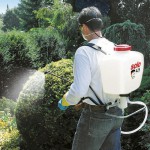
There are certain things you can do to lessen the harmful effects of pesticides on fish and wildlife. Read all pesticide labels carefully to find out whether the use of the product requires special steps to protect endangered species. Determine if the site is designated as the current habitat of an endangered species. Find out this information by visiting http://www.epa.gov/espp/ and http://myfwc.com. When you have a choice of pesticides to use, choose one that is less or non-toxic to fish and wildlife. Read and follow the “Environmental Hazards” section and use the special precautions and measures to minimize harmful effects. Treat only the areas that need to be treated. Leave a buffer zone (untreated area) between bodies of water and treated areas. It is your legal and moral responsibility to protect endangered species by careful use of pesticides in and around their key habitat areas.
Information for this article was derived from University of Florida publications “Pesticide Effects on Nontarget Organisms” by Frederick Fishel and “Applying Pesticides Correctly” by Thomas Dean and Norman Nesheim.
by Sheila Dunning | Jun 23, 2015
 Air potato (Dioscores bulbifera) is a perennial, herbaceous self-twining vine that can grow over 60 feet in length, enabling it to climb over and smother many native plants. The Florida Exotic Plant Pest Council (FLEPPC) lists air potato as a Category 1 invasive plant, which means that it has disrupted natural communities and ecological functions by displacing native plant species.
Air potato (Dioscores bulbifera) is a perennial, herbaceous self-twining vine that can grow over 60 feet in length, enabling it to climb over and smother many native plants. The Florida Exotic Plant Pest Council (FLEPPC) lists air potato as a Category 1 invasive plant, which means that it has disrupted natural communities and ecological functions by displacing native plant species.
In 2012, a leaf feeding beetle (Lilioceris cheni) was introduced into South Florida from China for biological control of air potato. Although it is too early to determine any potential long-term impacts, the initial results have been promising. The larvae and adults of the air potato leaf beetle feed on the leaf tissue and occasionally the bulbils. The damage to the growing tips of the plant have dramatically reduced its ability to cover native vegetation. Extensive damage to air potato was evident within three months after the first release. Additionally, testing by scientists at the USDA/ARS Invasive Plant Research Laboratory in Fort Lauderdale concluded that the beetle will not complete development on any other plant found in Florida.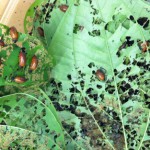
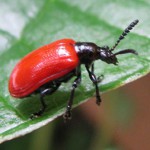 The female air potato leaf beetle lays an average of 1,200 eggs, which develop into larvae in about four days. The young beetles skeletonize the air potato leaves for the next eight days and then pupate into foam-like cocoons. Clumps of cocoons fall to the ground and the adult beetles emerge 13 to 16 days later. There can be a new generation of air potato leaf beetle every month while the weather is warm. For the winter, the adults hide in leaf litter and wait for spring.
The female air potato leaf beetle lays an average of 1,200 eggs, which develop into larvae in about four days. The young beetles skeletonize the air potato leaves for the next eight days and then pupate into foam-like cocoons. Clumps of cocoons fall to the ground and the adult beetles emerge 13 to 16 days later. There can be a new generation of air potato leaf beetle every month while the weather is warm. For the winter, the adults hide in leaf litter and wait for spring.
The question now is: “How well will they survive through a longer, colder Northwest Florida winter?”. USDA scientists, UF Extension agents and citizen scientists in Bay and Okaloosa County hope to find out. Earlier this month, June 2015, air potato leaf beetles from the Hayslip Biological Control and Research and Containment Laboratory in Ft. Pierce were released into areas containing air potato. They will be monitored over the next year. Look for an update next summer.
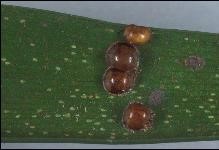
by Eddie Powell | May 8, 2015

Florida soft scale. Photo credit: UF/IFAS.
Scale insects are one of the most serious problems homeowners face on ornamentals this time of year. The most common are armored scale, soft scale, and mealybugs. They cause damage by sucking plant fluids from the leaves, stems, and sometimes roots. Some species feed on the underside of the leaves which can appear as yellowing spots or chlorotic lesions. Heavy infestations can cause extensive leaf yellowing, premature leaf drop, branch dieback, and plant death.
The life cycle starts when the eggs are laid beneath a waxy covering or beneath the adult female. After the eggs hatch two to three weeks later, the nymphs (crawlers) move around the plant until they find a suitable feeding site. Crawlers then insert their straw-like mouthparts into the plant and begin to feed and grow. The male often develops wings and flies to locate a mate.
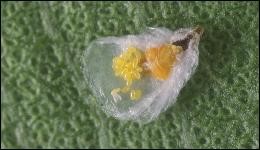
Armored scale nymphs. Photo: UF/IFAS.
Armored scale is distinct from other types of scales because they secrete a waxy covering over their body that is not attached to the body. The scale lives and feeds under this covering ranging 1/16 to 1/8 inch in size. They can be any color or shape, depending on the species. Armored scale does not produce honeydew.
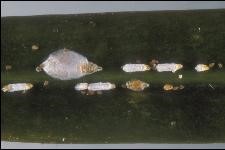
Armored scale. Photo credit: UF/IFAS.
Soft scale also secretes a waxy covering but it is attached to the bodies. Soft scales vary in color, size, and shape. They are circular shaped and range from 1/8 to ½ inch in diameter. Because they consume so much plant sap, they excrete a lot of sugary liquid called honeydew. Honeydew is the sticky liquid found on the leaves.
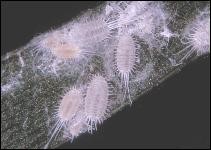
Mealybugs. Photo credit: UF/IFAS.
Mealybugs are soft bodied insects that are often covered with cottony white filaments. They are 1/8 inch in size and feed on all parts of plants. Injured plants have discolored, wilted, and deformed foliage.
Sooty mold is caused when mealybugs and soft scales excrete large amounts of honeydew which provides an excellent medium for the growth of the black fungus. Sooty mold is not only unattractive; it slows down the growth of the plant as it interferes with photosynthesis. Over time, with the control of the insect population, the sooty mold will weather away. Ants can also play a big factor in controlling sooty mold as they will feed on the honeydew.
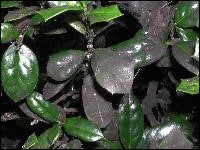
Sooty mold. Photo credit: UF/IFAS.
To control scale and mealybugs, avoid over-fertilizing and monitor your plants often. If the infestation becomes over-bearing, spray a fine mist of Horticultural Oil on the foliage. Avoid spraying in the summer heat because of damaging foliage. Other chemicals that can be used if necessary are Sevin dust and Malathion.
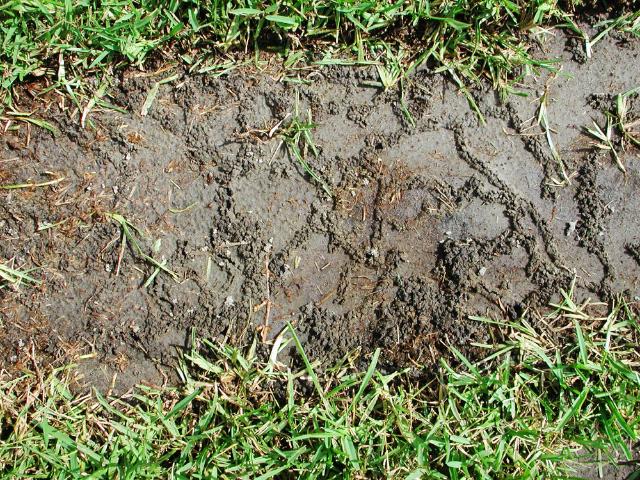
by Larry Williams | Apr 20, 2015
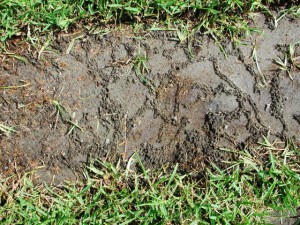
Mole cricket tunnels. Credit: N. Leppla, UF/IFAS
Many people treat their lawn with an insecticide when they see mole crickets in the spring or at the first sign of a brown area in their lawn. What they don’t understand is the biology of this pest.
Mole crickets spend the winter as adults in the soil. As temperatures warm in late February and March, adult mole crickets emerge and begin to mate. Male mole crickets construct a chamber in the soil and chirp to attract female crickets. Attracted females fly to the males. After mating, males die and females fly to a suitable area for egg laying. Mated females begin tunneling and laying eggs in the tunnels. They lay about four clutches of eggs in different areas, averaging 35 eggs per clutch. Female crickets die shortly after laying their eggs.
Use of insecticides during early spring is not recommended because:
- adult mole crickets are not easily killed
- they cause minimal lawn damage during the mating and egg laying process, and,
- reinfestation from subsequent flights is likely.
The best time to treat for mole crickets is during mid-June through July. This will be when eggs have hatched but before the nymphs (immature mole crickets) are large enough to do much damage. Proper timing of the insecticide application is very important to achieve control.
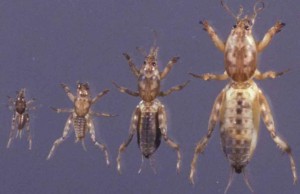
Mole cricket nymphs. Credit: J. Castner, UF/IFAS
If you are not sure if mole crickets are present, you can find out with a soap solution. Mix 1½ fluid ounces of a lemon scented liquid dishwashing soap in two gallons of water in a sprinkling can or bucket. Pour the soapy water over an area approximately four square feet and count the number of mole crickets that emerge. If they are present, it only takes several minutes for mole crickets to crawl to the surface after the soap treatment. Repeat the process around the yard where you suspect mole cricket problems. If you flush an average of two to four crickets per site, treat the lawn with an insecticide. Follow up with spot treatments if any crickets escape the first insecticide treatment. But don’t treat at all if there is no evidence of mole cricket activity.
There are a number of products for mole cricket control in home lawns. Look for insecticides that contain the following active ingredients: bifenthrin, carbaryl, cyfluthrin, deltamethrin, imidacloprid , lambda-cyhalothrin or permethrin.
Before using any product for mole cricket control first identify the problem as mole cricket damage by using the soap flush technique. Then choose an insecticide that lists mole crickets on its label. And finally, read the container carefully for use directions, application techniques, irrigation requirements and precautions.



















